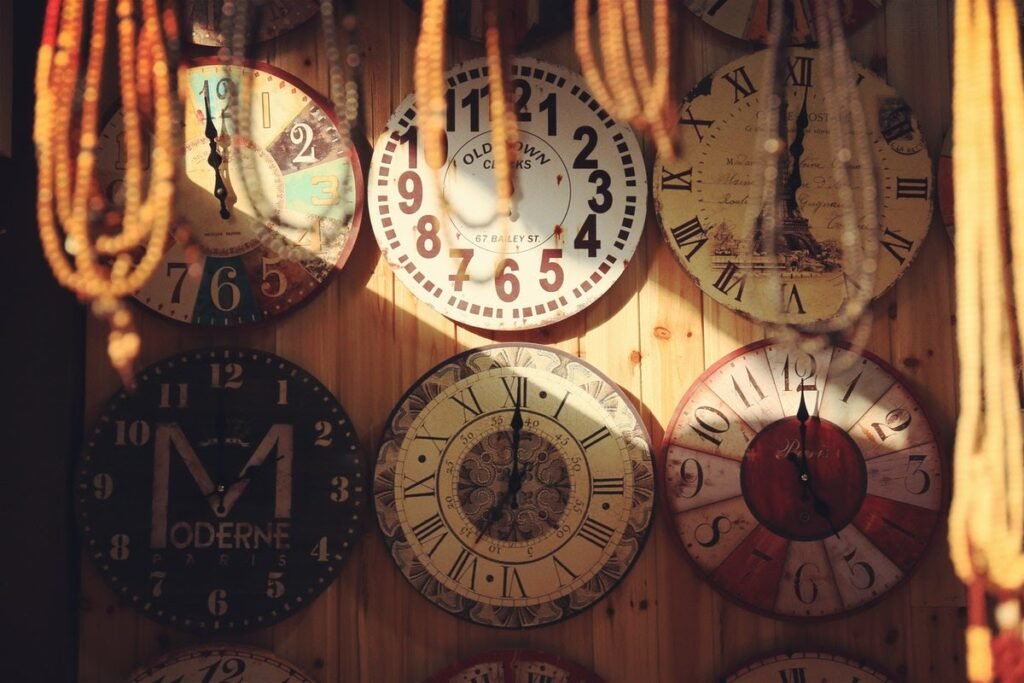Ever heard or watched the James Bond movie, “Diamonds Are Forever”? Well, diamonds are just one of the finest jewelry that people wear, and yes, they can last forever. Jewelry use began since the time man first learned to appreciate self-adornment, and just like every discovery in history, it evolved throughout the years, making jewelry-making the billion-dollar industry it is today. So, you may ask ” what is the origin of jewelry?”

So much has been told about the history of jewelry. Questions like who was the first to wear jewelry, why do people wear jewelry, and what year did gold production start are often asked. In this article, we will travel through time and discover what is the origin of jewelry, present important facts, and provide answers to nagging questions on the topic by providing interesting jewelry history facts.
Ancient Jewelry History

So what is the origin of jewelry? When men first walked on Earth, a few of them were already adorning themselves with jewelry. They wore it for different purposes—for self-expression, as a sign of commitment, or to show power, rank, and authority. They made various types of jewelry, but mind you, they were not as fancy as the ones that we have today.
Jewelry-making is a delicate craft, but our ancestors have mastered this art beautifully.
So, who was the first to wear jewelry? Cro-Magnons, the ancestors of Homo sapiens, were the first ones to wear jewelry, going back 40,000 years. These include bracelets crafted from animal teeth and bones and crude necklaces. In the early days, jewelry was generally used for practical purposes rather than decorations and status symbols. Hunters were the ones who largely wore jewelry. The oldest jewelry ever discovered is 100,000 years old and is made of Nassarius shells.
Ancient people mostly wore jewelry made of shells, colored pebbles, bones, and feathers. These colored pebbles and stones are the equivalent of today’s gems. The use of diamonds only became prevalent when man learned how to cut them. Nevertheless, ancient jewelry was always admired for their beauty, durability, and the creativity that our ancestors put into crafting them.
Let’s briefly examine how jewelry evolved in different times and cultures and why people wore jewelry during those days.
Mediterranean (now called Iran)
The earliest use of jewelry can be traced to around 3,000 to 400 BC. These adornments came in the form of simple stone amulets and seals—usually designed with stars and flowers. The people of the Mediterranean wore jewelry back then for religious purposes. They believed that these adornments carried spiritual meanings, even serving them as offering to their gods. They adorned statues and encrusted mummies with all types of jewelry—from headdresses to necklaces, rings, and crowns. Today, designers craft Mediterranean-inspired jewelry collections that are perfect for Boho and Coachella styles.
Egypt
The history of jewelry making in Ancient Egypt started around 3,000 to 5,000 years ago. Egyptians were always known for their love of gold over other metals. Their highest-ranked official, the Pharaoh, was even buried with gold jewelry when they died. Like the Iranians, Egyptians also wore talismans and amulets, the most famous of which was the scarab or small beetle.
Ancient Egyptian jewelry were used as symbols of social status, power, rank, and authority. Those who belong to the upper class adorned themselves with luxurious and expensive jewelry, such as gold, silver, amethyst, and turquoise. While those who belonged to the lower category (slaves included) donned only simple and cheaper items.
Apart from the type, Egyptians also valued jewelry based on its color. They believed that it is a reflection of one’s personality and beliefs. Gold, for example, represented the sun, that’s why only pharaohs and high priests were permitted to wear them. Green symbolizes fertility, and a red heart amulet was believed to preserve souls.
Familiar with the phrase, “classic like Egyptian gold”? Yes, Egyptian jewelry remains of great value even today and is worn by royal families and clans all over the world.
Greece

The Greeks started using jewelry in 1600 BC, of which were gold and gem beads shaped into shells and animals. They also made use of other metals, with their beliefs in gods and symbols inspired their jewelry style. During ancient times, one popular design was a bracelet decorated with snake and animal heads, which was mainly made from bronze. They also crafted pieces that depict their beliefs in mythic and heroic figures.
The Greeks mostly wore earrings, necklaces, crowns, rings, and bracelets. Women adorned themselves with hairpins, brooches, and large danglings. People in Greece back then only wore jewelry for special occasions and public appearances. It was meant to show wealth, social status, and beauty.
Their unique taste in gold and gemstones combination make Greek jewelry truly historical, a perfect example of which is the diadem. In modern times, Greek jewelry is mostly used in beauty pageants and royalty gatherings.
Rome
The widely-used gemstones of today were discovered during the Roman era. Rome was known for its early use of brooches, a clothing ornament. The Romans gave high respect to jewelry and used various metals and materials apart from silver and gold. They designed their jewelry with glass beads and pearls, and imported diamonds and precious stones from other countries, such as diamonds, sapphires, and emeralds.
Like the Greeks, the Romans wore jewelry in ancient times to protect themselves from evil and harm. Jewelry pieces were also meant to depict social status and power. Women highly adorned themselves with earrings, bracelets, and necklaces while men only wore a ring, and sometimes, long hairpins to be used for self-defense. Wrist and upper arm bracelets also became popular, which were mostly worn by kings and warriors.
Europe and the Middle East
Jewelry-making became a significant craft in Mesopotamia around 5,000 years ago. Discovered Mesopotamian artifacts are mostly made from silver, gold, and precious stones. Popular designs were gold figurines in crowns, close-fitting necklaces, and jewel-headed pins. People in Assyria also adorned themselves with extensive jewelry, including ankle bracelets and amulets. They developed sophisticated jewelry making techniques, such as engraving and granulation.
The Europeans, on the other hand, were exposed to new products and ideas during the Crusades. This was when trades and barters between Eastern and Western countries began. France established exceptional fashion trends in the 16th century, while English royalties awed people with their extravagant display of jewelry—from those worn on bodies to clothing ornaments. In the 17th century, the Baroque design was born, with diamonds dominating the jewelry world later.
Africa

Unlike other jewelry pieces, African jewelry was mostly made from organic materials. These included animal hide, bone, animal teeth, shells, wood, carved stone, and ivory. The origins of African jewelry date back 75,000 years ago. Beadwork was its top craft, and the Africans exchanged them for goods and rice crops.
African jewelry was mostly used for religious rituals and ceremonies over fashion and ornamental purposes. Like the Greeks, the Africans also valued symbols in jewelry making. Cowrie shells, for example, symbolized female fertility. Their hunters also wore anklets and bracelets, and sometimes, headdresses to protect themselves from harm.
Old African beads were also believed to bring good luck, prosperity, and wisdom. Like any other country, jewelry was a sign of wealth, marital status, and a person’s power and rank in African tribes and societies.
Asia
The most notable Asian jewelry making activities took place in India and China. The Indians crafted metallic bangles, bead necklaces, and gold earrings. In the early days, Indians made doughnut-shaped bracelets out of beads and painted them black. But in the modern era, Indian women mostly wear thin metal bangles.
According to Hindu belief, silver and gold are sacred metals. Gold represents the warmth of the sun, while silver symbolizes the coolness of the moon. Sometimes, gold is even associated with immortality and spiritual human life. India was remarkably noted for being the first country to cut diamonds into brilliance. Diamond jewelry was given as romantic gifts and tributes, and are still being used in Indian weddings and ceremonies.
China, on the other hand, utilized silver more than gold in jewelry-making. In later times, the Chinese incorporated glass and blue gems in their designs. They were likewise fond of almost all types of jewelry except for earrings, as wearing of them by piercings was considered taboo at the time.
Even women do not adorn themselves much with earrings. They also crafted amulets depicting the Chinese national symbol—the dragon and phoenix. Today, brand designers are making Chinese jewelry mostly for fashion and luxury.
America
Top jewelry brands, such as Tiffany & Co., Cartier, and Marcus & Co., all originated in America. Tiffany & Co. operated in Manhattan and became famous for designing prestigious diamond engagement rings. Getting engaged today is no doubt made more luxurious with the Tiffany brand. Currently, the Manhattan designer is releasing men’s jewelry collection and embracing the growing trend of unisex jewelry.
Like any other culture, Native Americans started making jewelry using shells, semi-precious stones, metals, and organic materials. Through continuous trade and barter, coupled with innovation, Americans have mastered the art of designing high-quality jewelry, including those made of diamonds, gold, and silver..
What Year Did Gold Production Start?
Gold mining began thousands of years ago, and the first use as money occurred around 700 BC. Before diamonds dominated the world, there was gold, which is still prominent in the modern era. Among other metals, gold is the easiest to craft due to its pure and workable state. Today, gold is not only viewed as a currency but also a strong symbol of social status, power, and affluence. Sometimes, it becomes a ground for discrimination, and people who cannot afford authentic gold jewelry are often categorized into the lower class society.
Why Do People Wear Jewelry?

Generally, jewelry is a symbol of social and marital status, wealth, rank, and authority. But in contemporary times, people wear jewelry as a form of self-expression and creativity. Other than fashion and ornamental purposes, people from all generations believe that a particular jewelry type reflects one’s personality, especially when you have mastered the art of playing with colors, gemstones, and different symbols.
Knowing what is the origin of jewelry leads us to believe that such adornments were and will always be a part of cultures and human life. It is a precious form of commitment, either to your loved one or yourself.
Jewelry has a very rich and beautiful history that is worth reading. If you want to know more facts about gold jewelry history, you can go check out our extensive guide on “Exploring the Past: Where Did Gold Jewelry Originate?”
